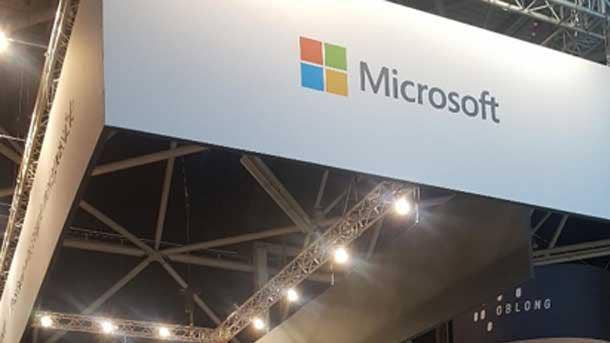Microsoft Partner Answers 6 Questions About New Sales Outreach
Microsoft MVP Amy Babinchak, a partner of the Redmond, Wash.-based software powerhouse for more than two decades, breaks down her understanding of the new sales initiative that led to direct calls from Microsoft to her customers.

Amy Babinchak — Microsoft MVP and the owner of two Michigan MSPs — said one of her customers reached out to her about an email directly from Microsoft offering a free network scan.
“My customer said, ‘We got this from Microsoft, do you think it’s something we should do?’” Babinchak told CRN. “And I said ‘What? You got what?’ “
Babinchak initially created a blog post, warning other partners. After a few days, a Microsoft executive reached out to speak about why her customers were targeted.
“She showed me some internal PowerPoints of some internal training about what those templates are supposed to look like and how they’re supposed to be worded, and what the process is, and how it is supposed to be followed,” Babinchak said. “She was pretty open-book about it, ‘This is the material they are supposed to follow. This is the training they all receive. This guy went off the road.’“
Microsoft responded last week with a statement via an outside press agency that said it would seek to improve the training its sales associates receive.
Babinchak said after her call with Microsoft she felt more at ease about the company’s intent — that it was not meant to target partners, but was intended to drive deeper adoption of products.

How did the call with Microsoft go?
I think she saw your article, then my blog post, and then contacted me. She said ‘I went back and I pulled up all the emails, and had a conversation with the guy who sent the emails, talked with the team over there, and he did take shortcuts and he didn’t follow protocols, and I made sure they’re using the right templates.’
She said all the right things to make me think that they have some intention to engage partners. Now Microsoft sometimes has trouble reaching those partners. At least that intention is there.
Having a relationship with them, that’s how you have to do business with Microsoft. You can’t stop them from doing what they’re going to do. We just have to find a way to leverage it to make it work for us.

Can you tell me about the new sales program that they are referring to?
Every six months or annually they re-emphasize their goal, and right now Microsoft’s goal is to increase the depth of product usage by customers. It’s not enough that they are using email and they bought 365, or they’re now using email and OneDrive, they want them to use some of the other 30 programs that come with that suite.
They want them to be configured in a secure way, because security has been in the news constantly. So what they’re doing is, they’re contacting customers and saying ‘Hey. We have this tool. It’s free. No cost to you. We want to run it in your network locally and also in your 365 environment and it will spit out an audit. It will say: Here’s all the security issues your environment has, here’s where you’re maybe vulnerable. Here’s where you are vulnerable.’ It will produce reports with all that information. It’s going to do asset management reports so, hey you know you’ve got three servers in your environment whose licenses are going to fall out of support, so you need to budget to replace those. Really all things that they’re partner should be telling them, but may not be telling them.
Also, part of that is going to say what it would cost to move on-premises workloads into Azure. Here’s an estimate of what it would cost to run those things in Azure that are getting close to their end of life on premise.

There’s still the question of integration though. Do you feel like Microsoft is equipped to integrate the product they sell to customers directly?
No. And I don’t think they have any intention of doing that. What their intention is, is that they would refer those companies to a partner. If they can identify a partner that they already have, then they will try to refer that business to them. If that partner doesn’t want that business or doesn’t respond, then they’re going to refer it to some other partner.
On your blog, you said “In a meeting with the person in charge of this program. I was told the communication sent to my client was reviewed and it did not adhere to their protocols.” What did they say about that in terms of how their protocols were not adhered to?
My name wasn’t in it. They contacted one of my clients. What it should have said is that this is coming from Microsoft and your partner, Harbor Computer Services, and we have this and we are working together on this basically. So it would have included the partner in that communication. And they should have also contacted me as the partner and included me in the conversation to say ‘Hey. We’re contacting your customer about this audit. Here’s the communication and we want to bring you in on this. They didn’t do that.
They just went directly to them and my customer said, ‘We got this from Microsoft, do you think its something we should do?’ And I said ‘What? You got what?’
Did they say how it was this mistake happened?
She didn’t go into a lot of detail other than to say the template was not followed. It sounds like they modified their email template and went their own way.
It sounded to me like it was at the local level, not at the national level. I don’t know where the staff is located.

When they assured you they corrected the problem, what was it that made you feel like they heard you and they understood what it was you were saying?
She showed me some internal PowerPoints of some internal training about what those templates are supposed to look like and how they’re supposed to be worded, and what the process is and how it is supposed to be followed. She was pretty open-book about it, ‘This is the material they are supposed to follow. This is the training they all receive. This guy went off the road.’
She said she called people in and said we need to bring your people in and do training, and make sure they’re using the appropriate templates, and they’re following the protocols and procedures that were set up because it is not acceptable to go around partners like this.’
She was pretty incensed herself that it happened.
After hearing that, what did you think as a partner?
I felt good about that. I think she understood my point of view. I’m not asking Microsoft to stop this program. I’m asking Microsoft to include me in this program. I know the realities of how Microsoft works. I just want to be included, not shut out. We were able to come to that in a cooperative way.
I don’t know that all partners will be happy with it, but I am. There’s going to be plenty of partners who are going to say, ‘I don’t want Microsoft contacting my partners for any reason,’ but that’s part of the deal. That’s how it works.